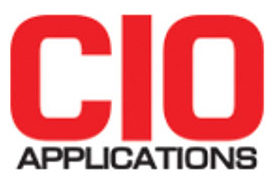
This article originally appeared 8/31/2021 on CIO Applications.
Disruptions in supply chains and the labor markets caused by the pandemic have forced a reevaluation of how critical autonomous systems are to the future sustainability of manufacturing systems and supply chains. It is reasonable to expect that companies previously looking into new technology to drive automation and autonomous or robotic controls will redouble that effort to impact short-term results and long-term strategic goals.

After our own success, we’re not surprised by this resurgence of interest in implementing an RFID tagging program. Our Kloeckner Metals Tulsa branch saw:
Implementing a manufacturing RFID program contributed to massive savings on time and resources and, after helping our customers set up RFID programs that would in combination allow us to track materials from our metal supplier and fabrication services facilities to their warehouses, we’ve come up with short list of considerations to help manufacturers get started with their own RFID programs.
For us, and for many manufacturers, the main objective was simply to save time locating metal in our facilities. We had stacks of metal throughout the warehouse and it was difficult and time-consuming to find certain items. On a larger scale, many manufacturers have no standard operating procedure across the organization to locate metal. We wanted a technology that would define and streamline operations, all the way from inventory checks to data analysis on orders, with the end goal of improving overall business efficiency.
In most settings, cross-functional teams will be needed. We needed to coordinate a new way of managing and integrating the tagging change with our shipping and material handling personnel. We typically expect with the implementation of any RFID tagging program a cross-functional team composed of operations management, internal or external engineering teams, and shipping and material handling personnel.
Our first step was to determine which tag technology type—active or passive—was best suited for our use case. As a high-volume distributor, active tags turned out to be far more expensive versus passive tags, however we found that the overall solution coupled with the capability to re-use the active tags provided a better overall ROI. We brought in various potential suppliers to share their recommendations. We ended up choosing RTV Engineering to help us move forward with the project and install the equipment. They helped integrate the tags with our proprietary system and address IT issues.
In the beginning, we were skeptical that an active BLE solution would work in our environment. We set up a pilot in a single bay and tracked 50 assets, spending significant time testing the solution. Reference tags were placed throughout the facility in known locations and compared to system reported locations. The sensitivity of the tag’s accelerometer was tested to ensure movement capture. Tags were placed on live assets and tracked to ensure the system reported the correct location. This helped us to fine-tune the technology before implementation.
There are many tracking solutions out there. We found that a Quuppa based material tracking solution best fit our needs to locate materials and assets faster while maintaining a more accurate inventory. We ended up deploying 70 Quuppa locators throughout the facility ceiling. Utilizing our partner RTV Engineering’s Site Director middleware, we were able to convert the X,Y location of each asset to a specific zone location. This facility was broken down into more than 3,000 zones, including Bays, Columns, Rows, and Sections. This allowed personnel to quickly locate assets based on the zone name. Site Director filters the incoming raw data from Quuppa’s location engine and only reports asset movement between zones to KloecknerMetals’s ERP.
We did have issues with the original selected 3rd party tag after we deployed approximately 1500. Location accuracy started drifting. Quuppa helped determined this to be an issue with timing and RTV Engineering developed another tag to meet our requirement of a replaceable battery. After evaluating data from the RFID, we determined it would be best to rework the layout of our facilities to be more efficient. Finally, due to the highly reflective nature of this deployment, Quuppa developed “earmuffs,” a method to tune the reception sensitivity of each locator.
Kloeckner Metals may be a manufacturing pioneer in Real-time Locating Systems (RTLS) and we are proud to pass on our expertise and efficiencies to our customers. As we look forward to digitizing the supply chain further and automating the entire customer journey, we are excited to see more of our customers—and the manufacturing industry at large.
This article originally appeared 8/31/2021 on CIO Applications.

Steel base plates are fundamental elements employed in various manufacturing...
Metal fabrication is a critical process that transforms raw metal...
The solar industry has undergone a significant transformation by incorporating...

X
The Kloeckner Metals website uses modern technologies. Unfortunately, your browser doesn't support those technologies.
Download the latest version of one of these browsers to experience the site: